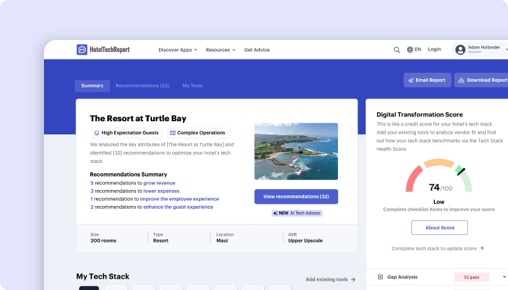41% of recruiters who work in the catering or hospitality industry find 'word of mouth' to be the most effective form of recruitment, according to a recent survey by catering equipment specialists Nisbets.
Their survey, which had 1,323 respondents, covers a range of topics surrounding recruitment and employment in the catering industry, unearthing some unique insights into the industry.
The majority of the survey respondents described the establishment they worked in as a restaurant (18%)
Cafe (17%) or pub or bar (15%). The rest were from fast food or takeaways (9%), contract catering (5%), hotel or guest accommodation (5%), residential or care home (3%), public sector such as schools or hospitals etc (3%), and 25% from other factions.
Recruitment Word of mouth is believed to be the most effective method for recruiting staff, as agreed by 41% of the respondents, with social media at 21%. 12% found their own website to be the most effective for recruitment, followed by job websites (9%) and agencies (7%), and finally online classifieds and print or newspapers, both at 5%.
Insights for catering and hospitality professionals:
Promoting jobs by word of mouth, on your website and social media are not only some of the most effective ways of recruiting staff, they are also free. When recruiting, make sure you list any vacancies on your website. This will help to capture interest from anyone choosing to visit your site to look for jobs. Once jobs are listed on your site, promote them through social media channels, linking back to your site for more information. Training The majority of respondents (66%) think that it is better for kitchen staff entering the trade to learn on the job, ahead of going to culinary school (34%).
Insights for catering and hospitality professionals:
To help contribute to this way of learning, organise an apprentice intake at your establishment. This will help to train the chefs, kitchen staff and catering professionals of tomorrow, whilst also giving you the opportunity to convey your business's best practises from the start. At work When asked whether chefs entering the trade have realistic expectations of the realities of life in the kitchen, 82% of respondents said 'no', and only 18% said 'yes'.
Insights for catering and hospitality professionals:
When recruiting for chefs, make sure to publish a detailed job description to accompany applications. A thorough job description will give you the opportunity to state what you expect from candidates before the job has even started. Follow this up with a thorough induction process to welcome the staff member to the organisation, manage their job expectations and explain what is required from them from the beginning. Publish 'A day in the life of a chef' on your website, to give those interested a unique view of what it's like to work at your establishment from the outside Although the respondents believed that chefs entering the trade had unrealistic expectations of life in the kitchen, 69% believed the media accurately represents real world kitchens and real life as a chef, with only 23% disagreeing and 8% not sure.
Colleague relations and working environments were both seen as important factors in staff retention by respondents, with 16% of the votes each.
A work/life balance was next important (14%), with pay (13%) and shift patterns and hours (12%)following closely behind. Other ways to encourage retention in staff included offering training opportunities (11%), opportunities for career progression (10%) and employee benefits (8%).
Insights for catering and hospitality professionals:
Ensure colleague relations and a good working environment are a top priority when looking after staff. Communicate with staff through regular team meetings and one-to-one sessions. In order to create a welcoming staff culture, organise regular team-building activities so that everyone has the opportunity to get to know each other outside of work. Staffing costs With the introduction of the National Living Wage, companies were asked how they expected to offset the increased costs this would impose - and 31% of the respondents said their company would continue to operate in the same way.
Others had something different in mind, with 22% saying they would have to implement stricter budget control, and 17% saying they would have to increase their prices. At 16%, another popular tactic included improving the company's product or service offering in order to drive extra revenue. Other options, which were notably less popular, included downsizing the workforce (7%) and reducing staff benefits (3%).
Insights for catering and hospitality professionals:
If you need to make adjustments in order to accommodate the introduction of the living wage, try making an analysis of your current spends and earnings. Keeping stringent records of the company expenditure and outgoings is a good place to start, and could provide you with an obvious way to save money. If you're opting to increase or improve your product or service offering to drive revenue, make the most of the people you have working for you. You employ experts who may have some bright ideas to increase the company's revenue. Overall, the feeling was that the introduction of the National Living Wage had had no impact (55%) in the short time since its introduction.
Some believed it had had a negative impact (31%) and the rest (14%) believed it had a positive impact in the short term.
Industry concerns When asked about industry concerns, the number one spot was taken by standing out from the competition; a concern for 20% of those answering.
Following closely behind was the service from suppliers (15%), reputation of the brand (15%) and the cost of ingredients (14%). Other concerns included costs related to the increased living wage (11%), retaining good staff (10%), the shortage of qualified kitchen staff (8%) and job security (7%).


